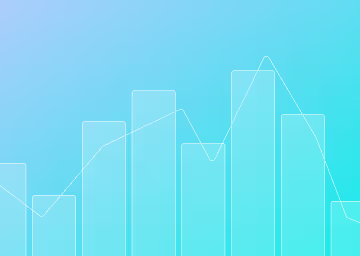The Difference Between GA4 and Universal Analytics

Introduction
Almost exactly ten years ago Google discontinued what was officially known as Google Analytics as it launched Universal Analytics. Now, they're giving businesses until July 1st, 2023 to switch over to GA4.
GA4 is a cloud-based analytics platform that provides businesses with granular insights into their customer data. So what is there to know about the difference between these two versions of Google Analytics? Why is it better to make the switch sooner rather than later?
Here's a comparison of GA4 and Universal Analytics to help you understand and navigate what's new.
What to Know About Google Analytics 4
GA4 introduces a new data model that collects and organises data differently than previous versions of GA. This means that you'll need to adjust how you analyze your data to take full advantage of GA4's capabilities.
However, the switch to GA4 will ultimately provide you with more accurate and actionable insights into your website traffic and marketing campaigns.
In addition to its new data model, GA4 also offers:
- Improved user acquisition reporting that makes it easier to track where your users are coming from and what they're doing on your website
- Better conversion tracking so you can get more granular insights into which actions users are taking on your site that lead to conversions
- Enhanced cross-device tracking to help you understand how users interact with your website across multiple devices
- A new Events framework that allows you to better track user interactions with your websites (such as button clicks or form submissions)
Overall, Google Analytics 4 is a powerful upgrade that offers significant improvements over previous versions of the software. If you haven't already made the switch to GA4, now is the time to do so! It can help you better understand the customer journey.
Key Differences Between GA4 & Universal Analytics
There are some key differences between GA4 and Universal Analytics that you need to be aware of to get the most out of the new version. Whether you manage a Webflow website or work with a more complex eCommerce store, here's what to know.
Flexibility & Customisation
If you've ever used Universal Analytics, you know that custom reports aren't used all that often. That's because they are hard to work with the platform and reporting features aren't very intuitive in this regard.
In most cases, it makes more sense to just choose from the plethora of predefined reports. Why is this the case, though? The technology UA was built on was old, so the capabilities surrounding Event data were pretty bare.
Now, in Google Analytics 4, you can explore many different events in the funnel as part of understanding the customer journey. You can also create any kind of table report in the Exploration segment.
This newfound flexibility and customisation is a game-changer for UA users. No longer are we limited by the predefined reports we can now create our own, custom reports that are tailored to our specific needs.
Scope
One of the key concepts in Google Analytics is scope. Scope refers to the level of detail that is included in your data stream. There are three different levels of scope: event, session, and user. Future versions of GA4 are set to include session scope as well.
What does any of this mean? For example, look at the following breakdowns of a couple of the scopes available.
Event-level data gives you the most detailed information, including information about individual pageviews and events.
Session-level data includes information about each user's session, such as the number of pages they viewed and the length of time they spent on your site.
Basically, the important thing to remember about scopes and data collection is that while GA4 gives better customisation, it demands more understanding of what you're working with. For all business owners, this is a good thing.
Once a data analyst sets reports for your specific needs, it will be just as easy to navigate through GA4 as it is for Universal Analytics. However, the added benefit is that you'll have a greater variety of custom reports that are more tailored to your business.
Speaking of reports
Reporting
In GA4, reports are divided into two big groups: the Reports segment and the Explore segment. Under the Reports segment, you'll find predefined reports that you can generate for a lifecycle or each user group.
This is quite similar to UA. However, the names look a bit different:
- Acquisition (this has stayed the same)
- Conversions (which is now called Monetisation)
- Behaviour (which is now called Engagement)
The Audience is now singled out in a completely different group which is called Users.
What you need to know is that the Explore segment of GA4 now allows you to dig deeper into insights about your customer's behaviour. At the moment, you have several different techniques you can use in exploration reports.
With these options, you can recreate most of the reports from the other segments. This is a big improvement when compared to Universal Analytics!
Attributions
Universal Analytics has always been somewhat behind the times when it comes to attribution modelling.
The last non-direct hit attribution model meant that if a user came to your site for the first time from Facebook Ads and then converted through organic search, only the organic search would get conversion value.
This was a major flaw in the system, and it's good to see that Google has addressed it with a data-driven attribution model in GA4. With a data-driven attribution model that relies on machine learning, everything is about converting touchpoints versus non-converting touchpoints.
All in all, this is a major improvement over the old system, and it will help you get a better understanding of where your conversions are coming from.
Event-Based vs. Session-Based
Remember, Universal Analytics uses "cookie-based" tracking. This means that when a cookie is stored in the browser of your visitor, the session starts and you can monitor user behaviour on your web.
However, with GA4, you benefit from an event-based analytics model. instead of tracking sessions and hits, everything that happens while a visitor is on your web or app is tracked as an event.
This is why it is possible to integrate both web and app data in one analytics tool. Event-based tracking also allows for more granular data collection than session-based tracking.
However, some believe that event-based tracking can be more difficult to implement than session-based tracking. Ultimately, the decision of which type of tracking to use depends on the specific needs of the business.
Privacy Consent
GA4 offers major changes in terms of user privacy as well. In the past, Google Analytics collected data without anonymising IP addresses. Now, GA4 automatically anonymises them all.
So what does this all mean? Google has created predefined parameters in GA4. So, if you send data to the platform with a user's consent, Google will automatically adapt and update user tags. This is a huge change and will help to improve data privacy for users.
Conversion Modelling
Conversion modelling is a way for Google to attribute conversions without identifying users. This is important for user privacy, as well as when users move between devices. Conversion modelling allows for accurate conversion attribution, even when there is missing data.
What Google's algorithm does is try to divert a conversion from one source to different sources of traffic. This means that Google won't predict or change the total number of conversions. Instead, it will distribute conversions more precisely.
How to Plan for Switching to GA4
Making the switch to GA4 can be a big undertaking, but with a little planning, it can be a smooth transition. Not only does switching as soon as possible provide you with the ability to start enjoying the benefits of the new features, but it's mandatory as of July 1st, 2023.
To make the switch, first, take inventory of your current Google Analytics setup. What features are you using? How are you collecting data? How complex is your tracking setup? This will give you a good idea of what needs to be ported over to GA4.
Once you have a clear picture of your current setup, you can start planning your migration. GA4 has a lot of new features and capabilities, so take some time to learn about what's available. Then, start mapping out how you want to port your data and tracking over.
If you're not sure where to start, there are plenty of resources available online. With a little planning and preparation, switching to GA4 can be a breeze.
Conclusion: Get Help With Your Website
Here at Paddle Creative, we have a team of experts that are ready and waiting to help you with your website. Yes, that even includes ensuring your GA4 analytics tracking is set up correctly.
We are an award-winning Webflow web design and digital marketing agency based in the UK. Contact us today to see how we can help you!

.svg)
.svg)

























